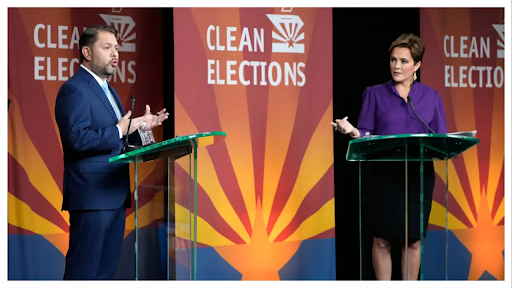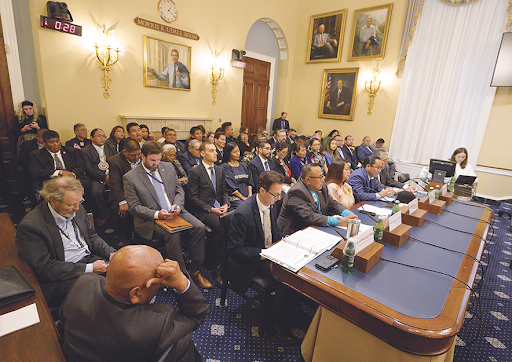Heteronormativity: Letter to the Editor
Although same-sex marriage has been legalized in the United States, we still have a long way to go with being recognized in a heteronormative society.
March 11, 2016
Before I begin this I would like to make sure that everyone knows that I am using LGBT+ and gay both as umbrella terms for all of the sexualities and genders that aren’t straight or cisgender.
In our society, gay rights and LGBT+ rights are just emerging. While this is exciting and represents huge leaps and bounds in society’s view of the community, we still have a long way to go. In many states, you can be fired for being gay, lesbian, transgender, having a same-sex partner, not fitting the gender binary, and being queer in general. One of the biggest problems right now is heteronormativity, the expectation that everyone is straight, monogamous, and cisgender. This marginalizes the 10 percent of students who identify as LGBT+. There is potential for that rate to be even higher than intended, as in the past few years the ratio of LGBT+ students jumped from one in 20 students to the one in 10 we know today, according to the Guardian. There are still people who oppose gay marriage and want the amendment repealed, still hardly any representation in the mainstream media, and the marginalization of too many people.
It’s 2016, and we still have people who oppose same-sex marriage. The amendment has already been passed and it has been a huge benefit to millions of couples. Those who are against gay marriage are typically very religious, although there are many angles to being against same-sex relationships. Their main arguments are that being gay is “unnatural,” “offending God,” “depriving the child of a mother or a father,” and “undermining” heterosexual marriages and relationships, according to Tradition, Family, and Property Student Action (TFP Student Action).
Being gay is actually found in over 1,500 species of animals, according to the Museum of Natural History of the University of Oslo in Sweden. There’s even an entire species of chimpanzees that is considered bisexual by researchers, with sexual intercourse being a very important social aspect for them because it is used to solve conflicts. Lions, whales, dolphins, and many other animals have exhibited this behavior. Also, homosexual mates will look after and raise orphaned and abandoned youth together.
The first amendment protects our right to freedom of religion, which means that we don’t have to follow the Bible or another holy book. There are also references in the Bible pertaining to privacy of religion. “And when you pray, do not be like the hypocrites, for they love to pray standing in the synagogues and on the street corners to be seen by others. Truly I tell you, they have received their reward in full. But when you pray, go into your room, close the door and pray to your Father, who is unseen. Then your Father, who sees what is done in secret, will reward you (Matthew 6:5-6).” This basically means having a deeply personal relationship with God and not infringing that upon everyday people. You don’t have to preach to everyone to still be a “good” Christian, as long as you are following your morals. Although the Bible does say to share your faith, it does not say to force it upon others who are not interested, nor to discriminate against those who don’t have the same beliefs as you. But don’t forget that you can be gay and be a person of faith because everyone has a different relationship with their religion.
A child with gay parent(s) is not at a detriment when compared to others, they still have parent(s) who love them very much and care for them. Yes they may not “have” a mother or father, but they will still have those other parental figures in their life and when you have parent(s) who love you, that’s all that matters.
I don’t understand why people think that same-sex relationships will somehow “undermine” straight ones. Relationships are about love and commitment and all that jazz, and honestly the more we have of that, the better.
There’s hardly any representation of the queer community in mainstream media which leads to the marginalization of LGBT+ people. This is leads to heteronormativity because it teaches us that heterosexuality and being cisgender is “normal.” It becomes an expectation. This is extremely harmful because it leads LGBT+ students feeling “wrong” and it can be very difficult for their peers to accept them. Also we tend to assume that everyone is straight, which is very messed up. Teachers have often used LGBT+ rights as a “fun” and “interesting” debate topic. There is nothing fun about people telling me that I shouldn’t have the rights to love who I love. These debates are incredibly damaging and very unnecessary. Being LGBT+ is not a “fun” or “interesting” topic, as many people seem to believe, it’s reality for so many people.
The most harmful thing a parent, teacher, or any role-model for a child can do, is assume that everyone is straight and cisgender. Although these are the most common ways for someone to identify, they are not the only. Also, just because something is common, does not make it normal or healthy; that also goes for the reverse, just because something is uncommon does not make it unhealthy or abnormal. Identifying as LGBT+ is normal and the heteronormativity that’s so deeply ingrained in our culture is so hard to unlearn, but we can take baby steps to undo it. For example, if a friend comes out to you, rather than bombarding them with questions, a better response (in my opinion) would be to tell them you’ll support them and you’re proud of them for being so brave. As for the million questions running around your head, ask your friend if they’re willing to talk about it. If they are, that’s great and you can ask a few questions; if not, that’s also great. You could probably find similar explanations to your questions online if you’re really curious. Just remember that not everyone is straight and/or cisgender, everyone’s different.
Along the lines of not assuming that everyone is straight, also don’t assume that everyone wants a romantic and/or sexual relationship. There are people who are asexual (not feeling sexual attraction) and who are aromantic (not feeling romantic attraction). The expectation that everyone wants a relationship is another part of heteronormativity that can be problematic. This expectation can erase asexual and aromantic people from certain parts of the LGBT+ community, which is depriving them from a community of people who face similar issues as them.
In conclusion, heteronormativity is a frustrating, damaging, and unnecessary social phenomenon that fuels anti-LGBT+ groups/beliefs and makes the fight for rights even more difficult. Being LGBT+ is completely normal and needs to be recognized more in the media and in everyday interactions to protect the young members of the LGBT+ community.








